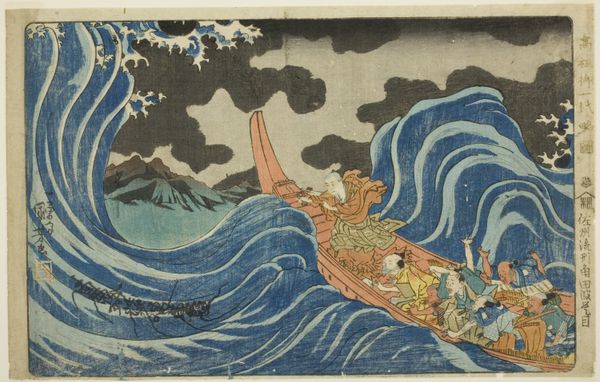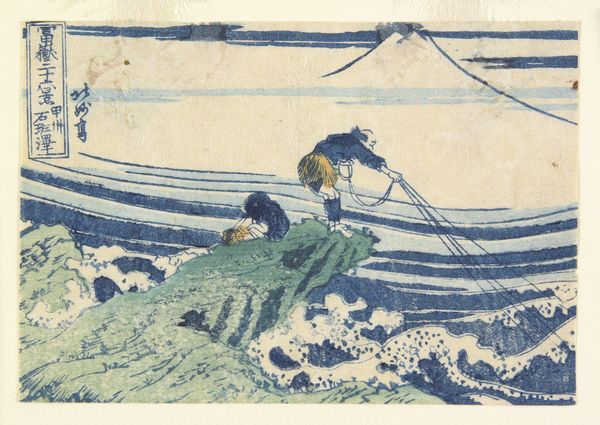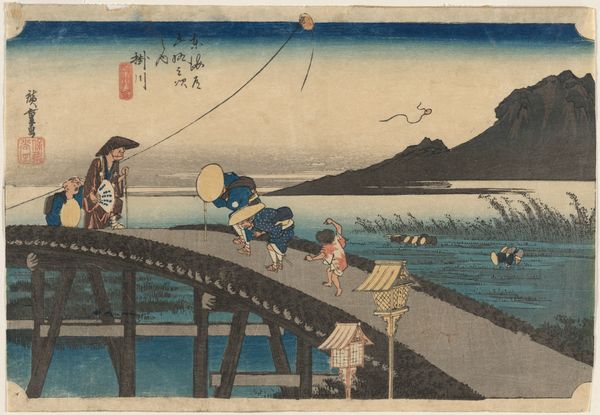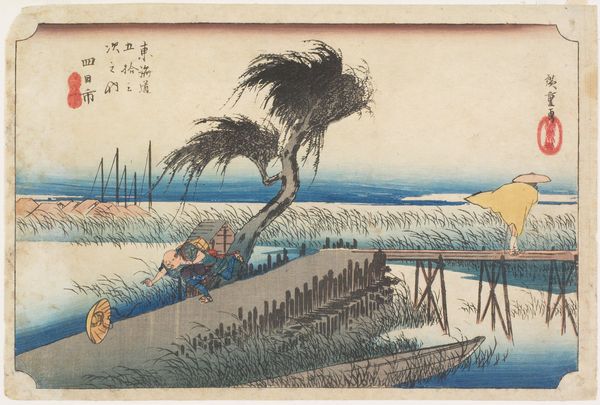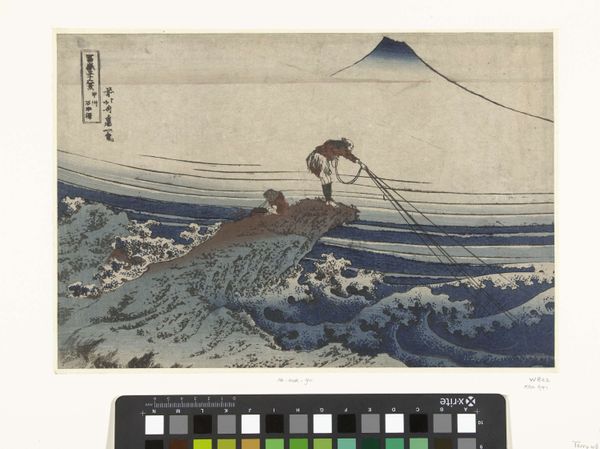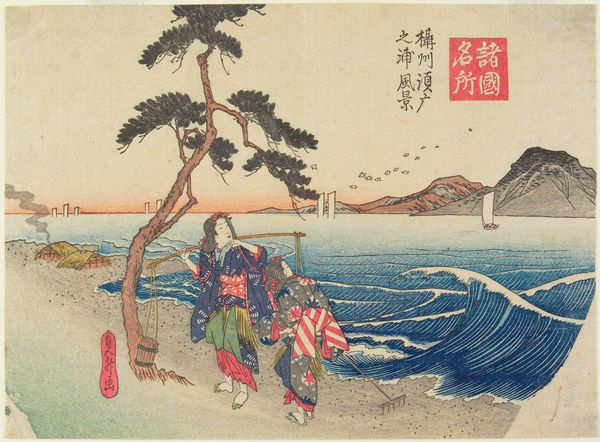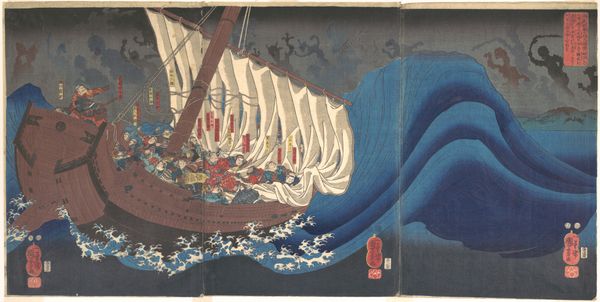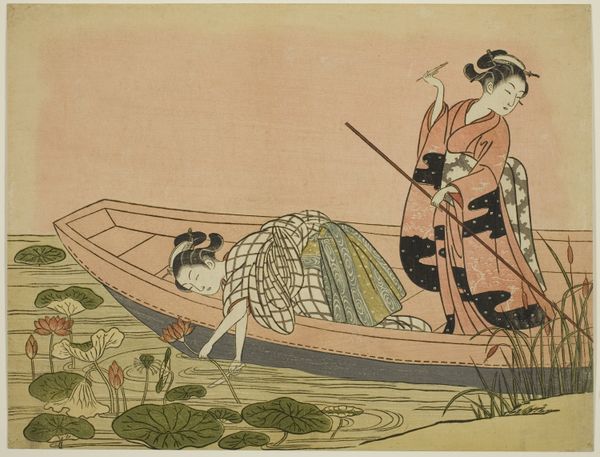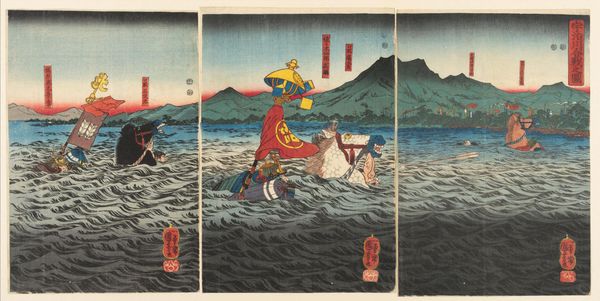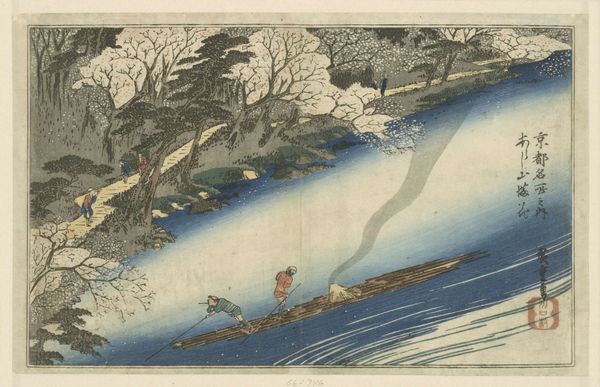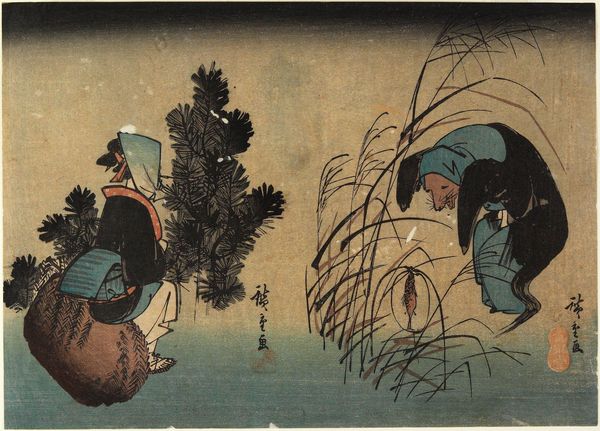
print, plein-air, ink, woodblock-print, engraving
# print
#
plein-air
#
asian-art
#
landscape
#
ukiyo-e
#
ink
#
woodblock-print
#
orientalism
#
history-painting
#
engraving
Dimensions: 9 15/16 × 14 3/4 in. (25.3 × 37.4 cm) (image, sheet, horizontal ōban)
Copyright: Public Domain
Curator: Look at the drama in this woodblock print! It’s titled "Kajikazawa in Kai Province," created by Katsushika Hokusai between 1830 and 1833. Editor: I am immediately drawn to that craggy, wind-swept rock! It is as if I can feel the mist on my face, and sense the surge of the ocean. Curator: The print comes to us from the Minneapolis Institute of Art. Hokusai, of course, is best known for "Thirty-six Views of Mount Fuji." The series explores themes around labor, geography, and also resource extraction in the Japanese landscape. Editor: Yes, the lone fishermen…there's an interesting dynamic! A vulnerable interaction between man and a volatile sea. It is like they’re holding threads attached to the sky itself. Is it just me or do you feel the starkness in this portrayal? It’s quite poetic in a slightly somber tone. Curator: Definitely, although there is a lot happening on a compositional level, the act of catching fish, the tools required, the waves in the water…are all skillfully depicted through labor-intensive printing processes, of course. The use of ink and subtle color gradations shows expertise in the material's affordances. Editor: Speaking of materials...those blues. What I see, particularly in the treatment of the water... it pulls me in. In a way it has a lot to say about how small, yet impactful our existence can be against such a mighty landscape. Curator: Precisely, the printmaking tradition—especially Ukiyo-e, is fundamentally about the intersection between artistic expression, skilled craftsmanship, and the societal structures that both enable and consume it. Hokusai was working in an environment with particular socio-economic constraints which influence his work significantly. Editor: It feels to me that it transcends its era. You can ponder it for hours on end…there's just this hauntingly honest atmosphere. Curator: Yes, thinking about the material and social context certainly changes the way you look at the finished piece, and really reveals what lies beneath. Editor: It’s incredible how this artwork gives such immense thought for something so still.
